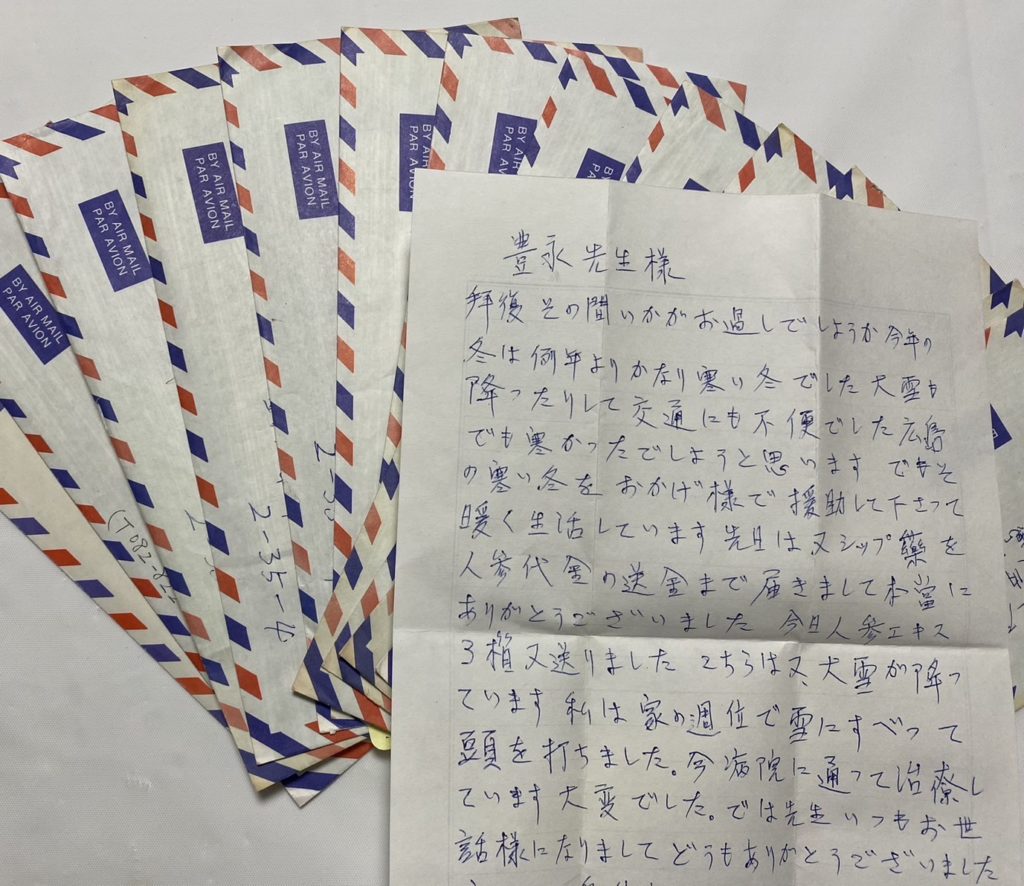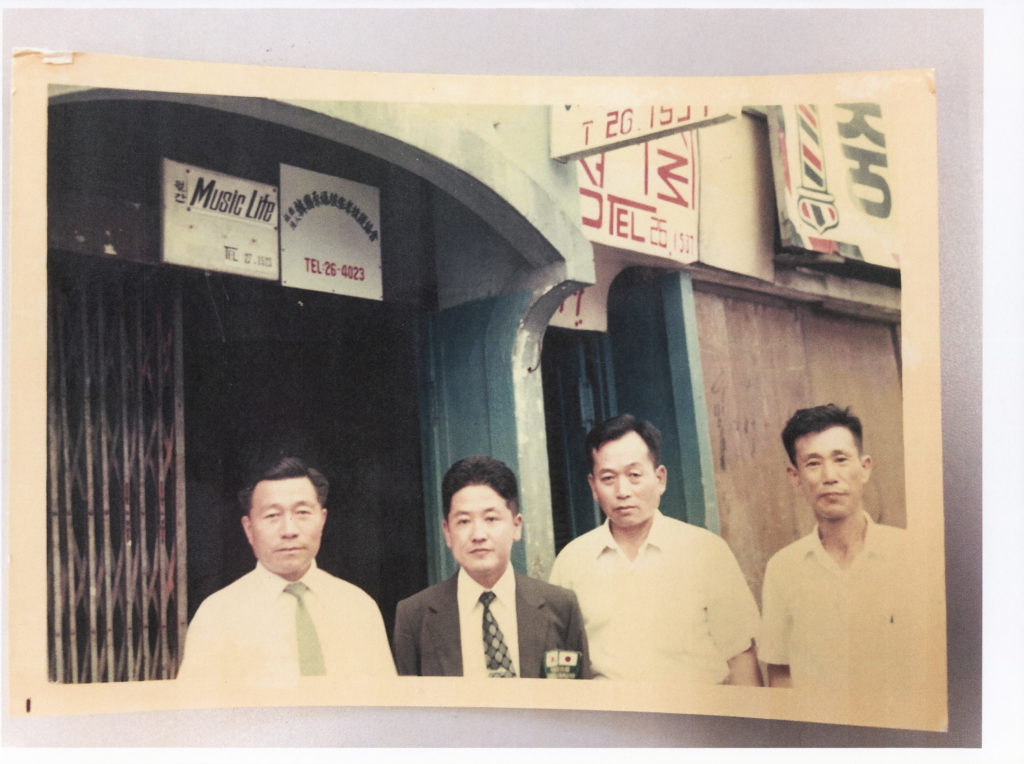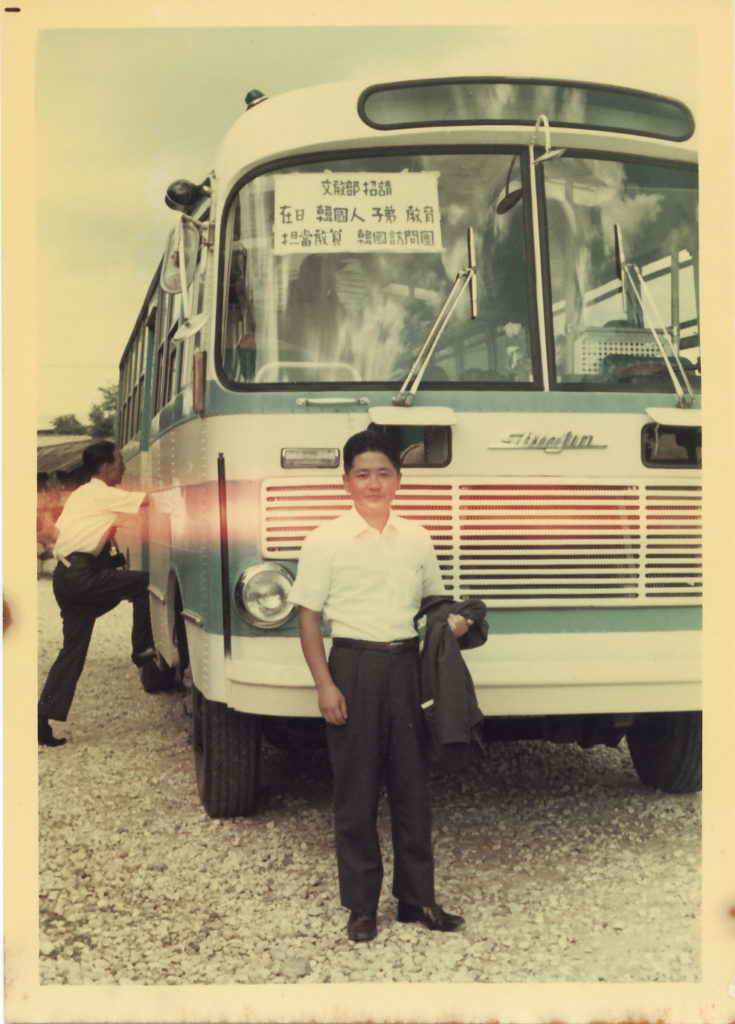Keisaburo Toyonaga
My Life Dedicated to A-bomb Survivors Overseas
7. I Want to Support the Forgotten A-bomb Survivors Living Abroad
In 1971, the Korean Ministry of Education sponsored a program in which the Korean Residents Union in Japan selected nine Japanese teachers, one from each region of Japan, to participate in study sessions in Korea for about a week. The program was to learn about Korean education, and I was selected as a participant from the Chugoku region. I departed from Osaka International Airport and we stayed at a hotel the day before the departure. Watching an NHK news program in my room, I saw Sin Yongsu, president of the Korean Atomic Bomb Survivors Association, who had been exposed to the atomic bomb in Hiroshima and had returned to Korea. She was appealing for relief for the plight of A-bomb survivors living in Korea. I thought to myself, ” While I’m in Korea, I would like to somehow meet and talk with A-bomb survivors living in Korea.”
However, after arriving in Korea, we nine Japanese teachers stayed at a dormitory, and our overcrowded schedule made it difficult to find time to go anywhere. However, we were scheduled to do a home stay for two days and one night on August 14-15, August 15 being the National Independence Day holiday of Kwangbokjeol. I stayed with a diplomat family, and when they asked where I wanted to go. I told them I wanted to visit the Korean Atomic Bomb Survivors Association, and they kindly provided me with a car and an interpreter. The main streets of Seoul were lined with beautiful buildings, but once the car entered the back streets, there were rows of old tenement houses. The association was housed in one of them.
Although my visit was unannounced, four people were there who had been exposed to the atomic bomb in Hiroshima. They spoke fluent Japanese, so we were able to communicate with each other without the interpreter. They complained about the plight of hibakusha who had returned to Korea, saying that neither the Japanese nor the South Korean government were supporting them. The Japanese government said that it had already settled the issue of compensation under the Japan-Korea Basic Relations Treaty of 1965. Also, the South Korean government was a military regime at that time, so any attempts to seek compensation from them were strictly prohibited. As a result, hibakusha living in South Korea were neglected. I tried to give them \50,000, a parting gift I had received from my colleagues when I left Japan, but they said that they would prefer receiving it in a way that would be reported by the media. So, the next day, I gave the money to them in the presence of The Korea Daily newspaper, and a small article about that with a photo appeared later.
Through correspondence with hibakusha living in South Korea, I learned that they lost everything they had built up in Japan until the atomic bombing. They returned to Korea after the war with only their belongings and were forced to live miserable lives, unable to work due to poor health, without knowing that they were suffering from radiation damage, and discriminated against because they were returnees from Japan. In December of that year, an article appeared in The Asahi Shimbun newspaper about the formation in Osaka of the Association of Citizens for Supporting South Korean Atomic Bomb Victims. I immediately offered my cooperation and was then asked to form a group in Hiroshima as well. The following year, in 1972, I founded the Hiroshima chapter with my fellow teachers, Dr. Torataro Kawamura, who had studied medicine at Kyungsung Imperial University, a university established in Korea during the Japanese occupation, and Mr. Munetoshi Fukagawa, who had worked at Mitsubishi Heavy Industries, in charge of conscripted workers from Korea. Our activities included both providing medical treatment for Korean A-bomb survivors who traveled to Japan and supporting their court cases.
Over a six-year period from 1980 to 1986, the Japanese government allowed Korean A-bomb survivors of Hiroshima and Nagasaki to travel to Japan for treatment. The number of treated survivors was 349 (226 in Hiroshima and 123 in Nagasaki). However, as their treatment was only allowed for two months, the support was not sufficient, so in 1984, Dr. Kawamura and his friends established a group, the Hiroshima Committee for Korean A-bomb Survivors to Travel to Japan for Treatment, which admitted Korean A-bomb survivors to his own hospital for examination and treatment. I heard that most of the treatment was funded by donations from friends all over Japan and his own contributions. By 2016, they had treated 572 people!




